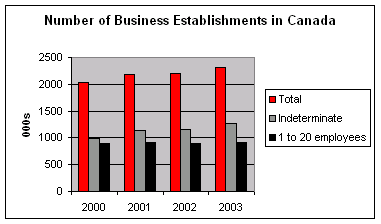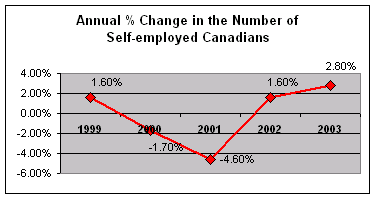Searching the
Internet can be a frustrating experience. Many researchers however compound
the problem by repeating their own bad habits over and over again.
The worst habit is not focusing your search words. In
a recent OneStat.com survey it was found that more than half (51.5%) of all
online searches use only one or two words. Given that the size of the
Internet is now in the billions of web pages searching by only one or two
words will inevitably return millions of unrelated and irrelevant results.
It will only work if you are searching on very unique words or specific
company names. Unfortunately, for most searches this is not the case.
Don't follow the crowd! Search with more than two
words. Better yet, use combinations of words and short phrases. Most search
engines let you search on phrases if you put quotation marks around the
words you want to search on. (E.g. "hot tub"). Also look at the help feature
of the search engine you are using to find out what special symbols you can
use to focus your search even more. Remember, sifting more than 3 pages of
results is unproductive. Instead refocus your search terms and expand them
to be more specific.
The second bad habit of poor Internet searching is
using the same search engine for every search. According to a recent
iProspect Search Engine User Attitudes Survey 56.7 of Internet users use the
same search engine or directory over and over again. They tend to be
stubbornly loyal to their favourite search engine even when they do not
always get the results they want. The most popular search engines were
Google (iProspect "loyalty rate" of 66 %), Yahoo! (55%), MSN (54%) and AOL
(49%).
While loyalty is an admirable quality it is not a
sound research strategy. Successful searches on the Internet are not based
on which search engine is considered the best or the most popular but
rather on which search engine can locate the information you need. Different
search engines work according to different software algorithms. Each
provides a different perspective of the web. Make sure your search is 360
degrees!
2004 promises to be the most exciting in many years
for the Internet Search engine market. And no, it has nothing to do with
Google going public.
Instead the real excitement is that Yahoo! has gone
from being one of Google's best clients to being its main competitor. Before
you scratch your head too hard on this one and dismiss me as a techno geek,
let me explain.
The Internet search market is made up of two kinds of
services. The first are "directories”, sites where human editors have
organized other web sites into categories. Yahoo! is the most famous of
these search services. The other type of search service is "crawlers".
Crawlers automatically "crawl" the Internet searching out links and
compiling search results. Each "crawler" compiles its database by using a
unique search algorithm. The most famous crawler today is Google.
Distinguishing between the two types, directories and crawlers is usually
pretty straight forward.
Where things get murky is when you scratch below the
surface. When you conduct a search on Yahoo! it searches its directory but
to enhance the search results and hopeful be more helpful to the researcher,
it also accesses a "crawler" service. Up until February of this year, Yahoo!
accessed the Google crawler. All this time you thought you were using Yahoo!
and underneath the Google search engine was at work. Approximately a third
of all Google searches came from Yahoo! users.
Yahoo! has now brought their crawler searches in-house. They now use the Inktomi crawler service they purchased in
2003. Yahoo! has been working diligently to make this crawler a formidable
competitor to Google.
What all of this means to the business researcher is
that if you conduct a search on Google and the same one on Yahoo! you will
now effectively access two separate crawlers resulting in different results.
It is like searching the haystack from two different sides.
While there are a number of "crawlers" searching the
Internet, four stand out as the most effective:
- Google (most famous and popular)
- AllTheWeb (rivals Google in comprehensiveness)
- Inktomi (one of the oldest crawlers online, newly
revitalized by Yahoo!)
- Teoma (smaller compared to the others but known for
better relevancy)
Each of these crawlers in turn powers other web search
services:
Google powers: Google, AOL, Netscape
AllTheWeb powers: AllTheWeb
Inktomi powers: Yahoo! MSN, HotBot
Teoma powers: Ask Jeeves, Teoma
If you are not finding the results you require in one
search engine switch to another. Even if you find useful links in your first
search, try the same search with another crawler to see if other relevant
results exist.
To facilitate this strategy bookmark all of the
principle search engines in your browser or use the following page as a
search starting point:
http://searchenginewatch.com/links/article.php/2156221#top.
When you are finished searching in one search engine,
highlight your search terms by dragging your cursor over them, then press
Ctrl-C to copy the text. When you have arrived at your new search engine use
Ctrl-V to paste the text into the new search box. Make any adjustments that
are necessary to take full advantage of the new search engine. If you are
not sure what to do, read their help section. It sounds like a daunting task
but believe me you will get faster the more searches you do and you will
immediately see relevant results!
There is another search creature out there that can
also assist in this process. It is called the Meta Search engine. These
search services query a number of search engines at the same time. The
biggest and most effective players in this market are Mamma.com, Dogpile.com,
Vivisimo.com
Given the existence of a Meta Search Engine the
question immediately arises why would anyone bother to use a Single engine.
The most straight forward answer is that relevant search results from one
source such as Teoma could be buried under not-so-relevant results from 15
other sources. Also, Meta Search Engines cannot always take advantage of
special search symbols and strategies that work in one search engine but not
another.
Variety is the key to successful Internet searching.
Use a variety of words and phrases in your search and try a number of search
engines in your quest for information.
Here is a list of links to all the search tools
mentioned above:
Search Engines
http://www.google.ca
http://ca.yahoo.com/
http://www.aol.ca/index_portal.html
http://www.netscape.ca/
http://www.alltheweb.com/
http://ca.msn.com/
http://www.hotbot.com/
http://www.ask.com/
http://www.teoma.com/
Meta Search Engines
http://www.mamma.com/
http://www.dogpile.com/
http://vivisimo.com/
Return to Table of Contents


